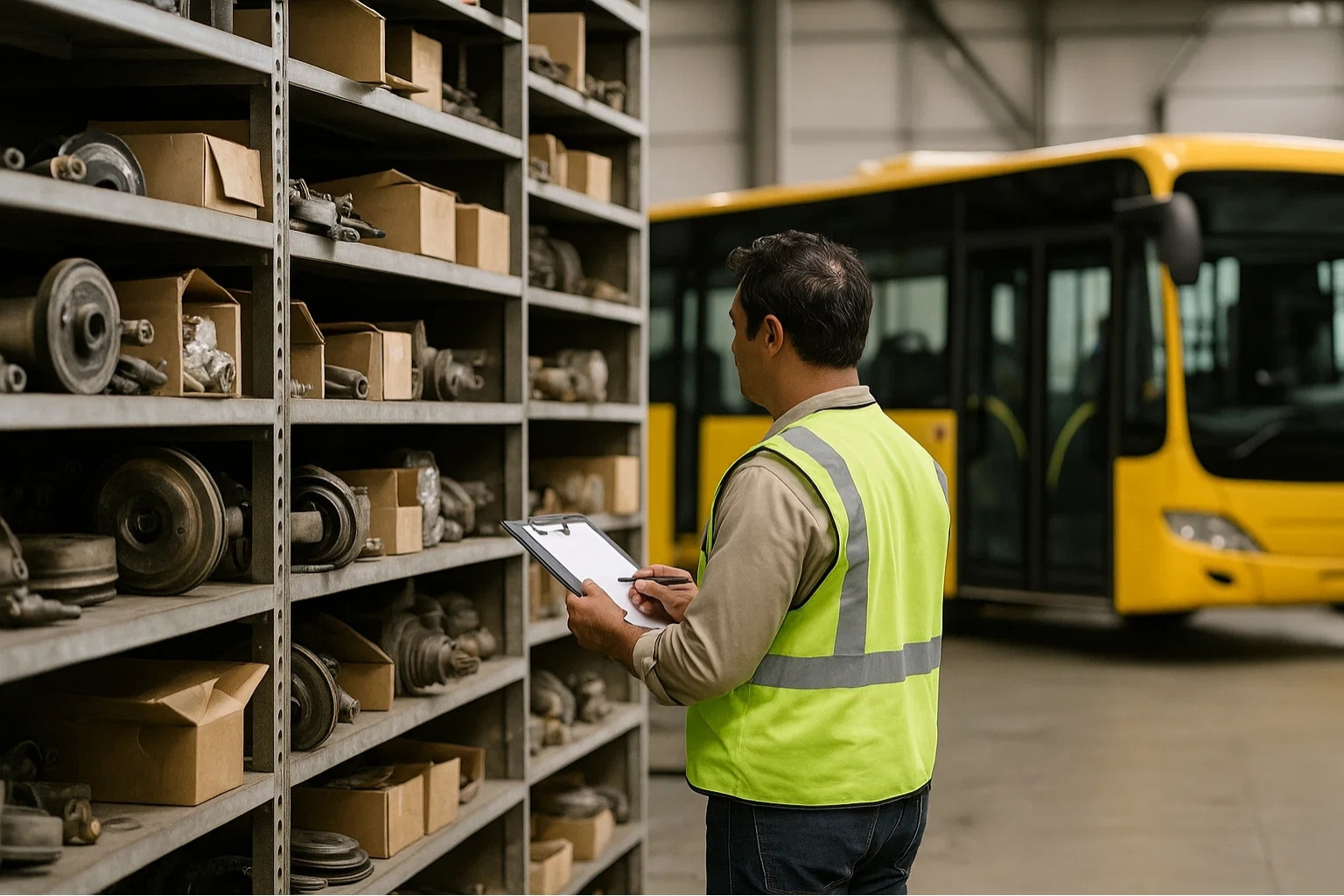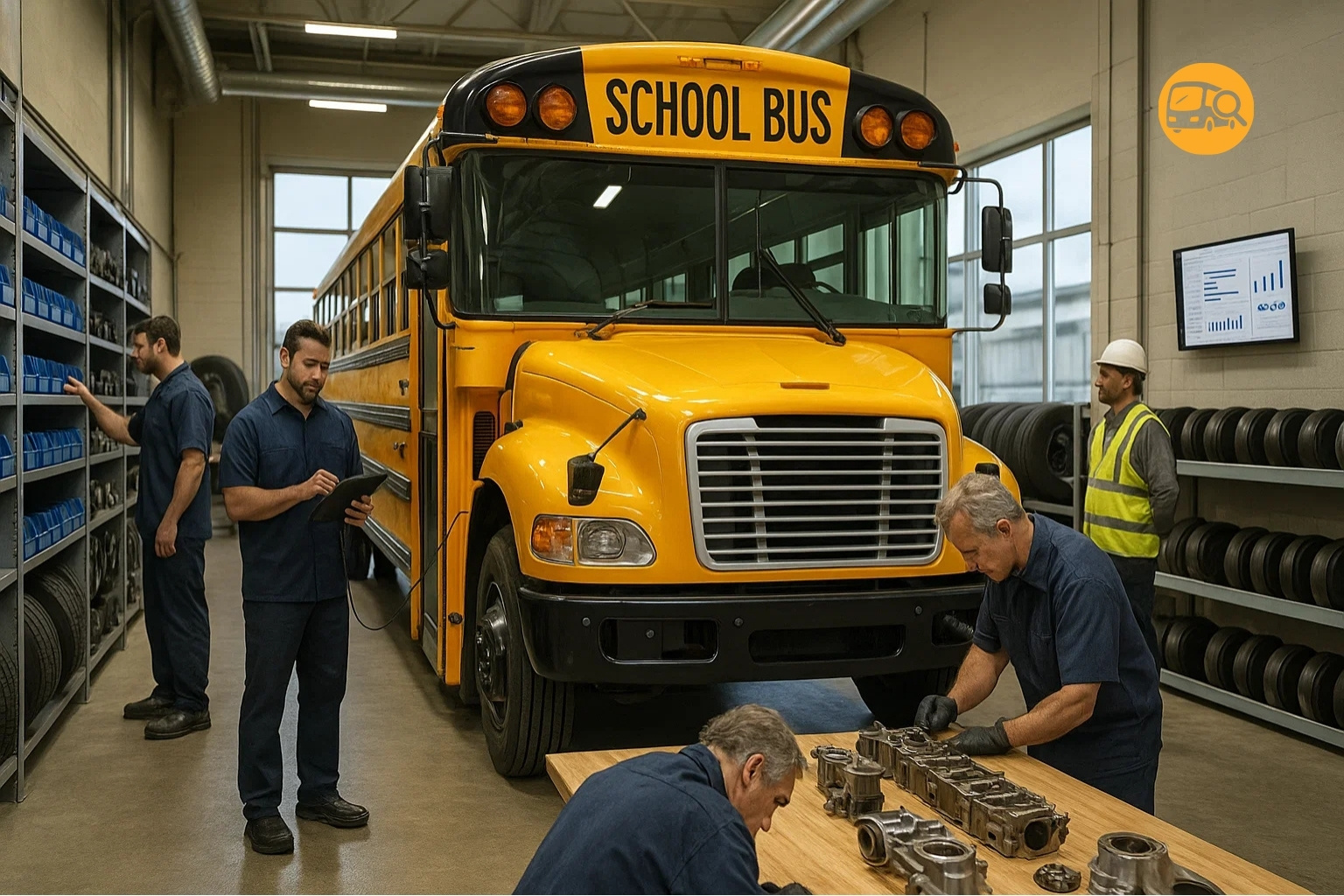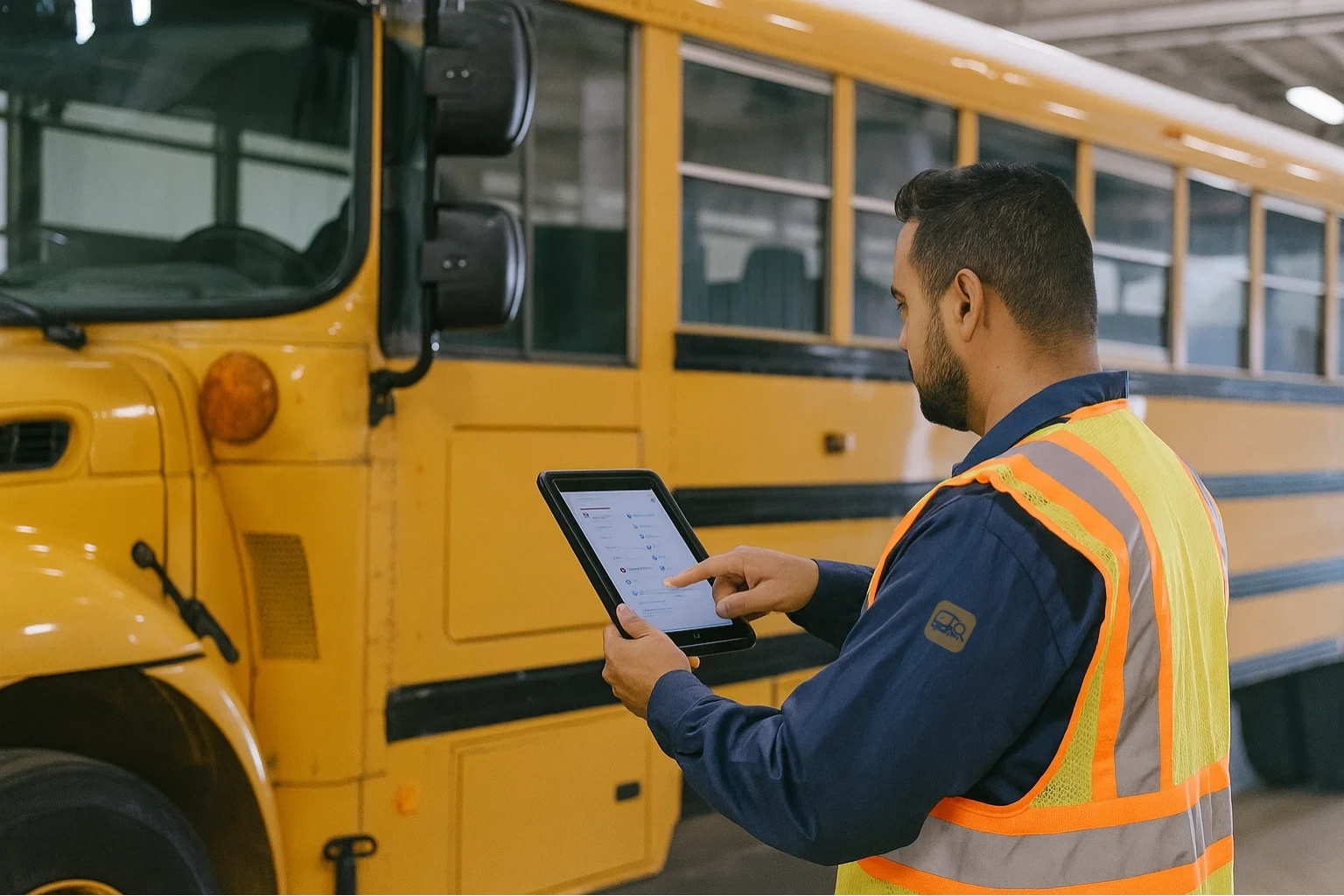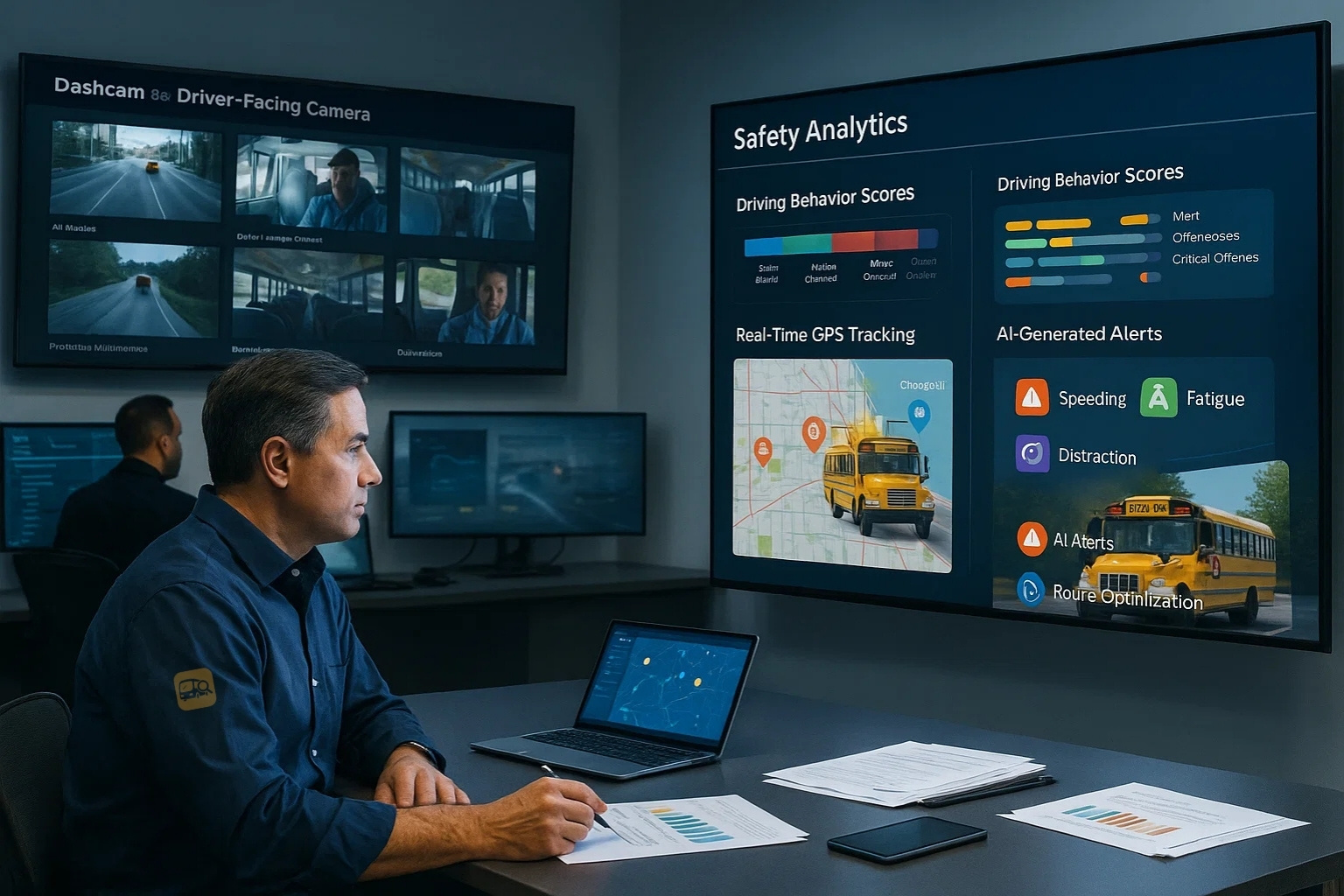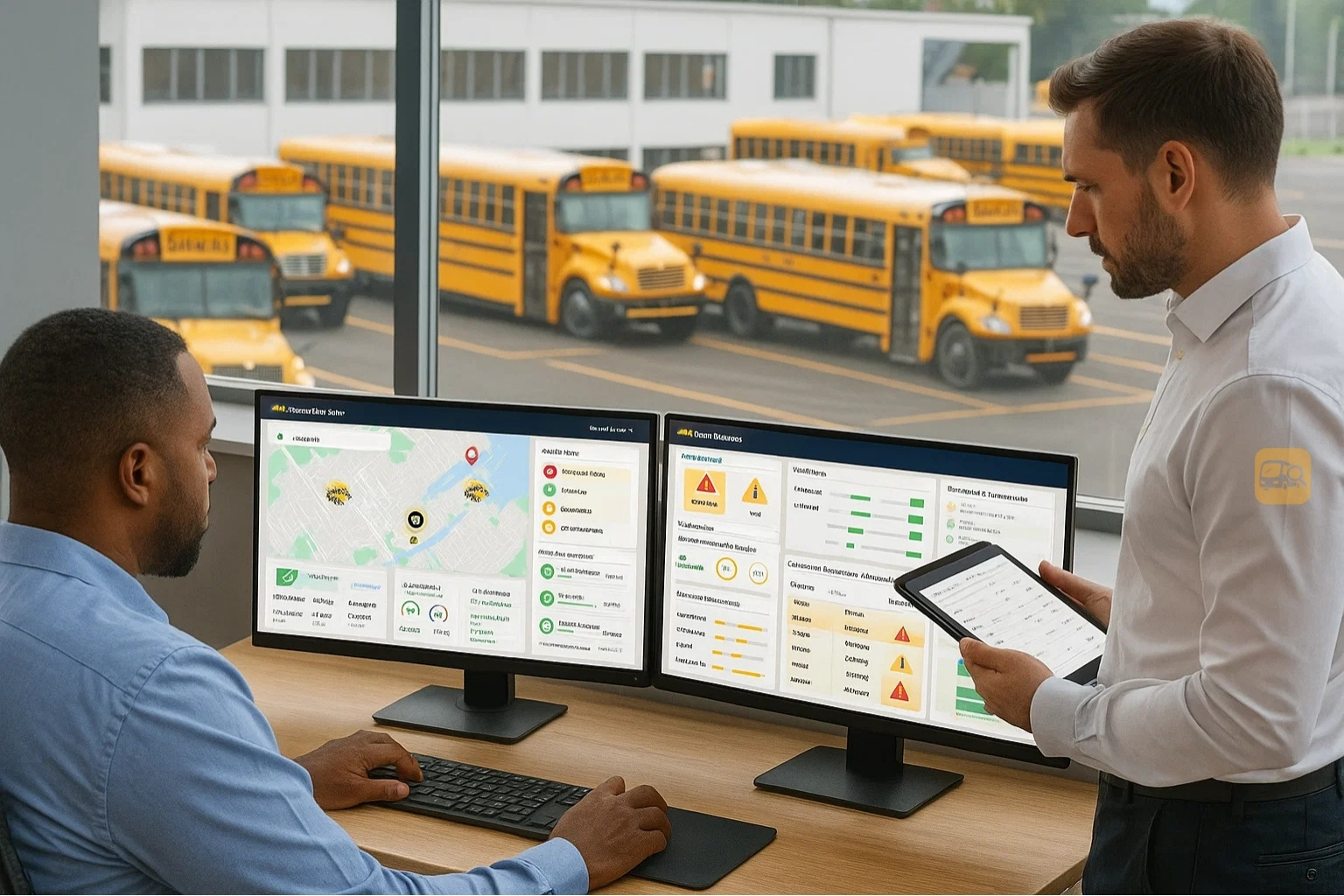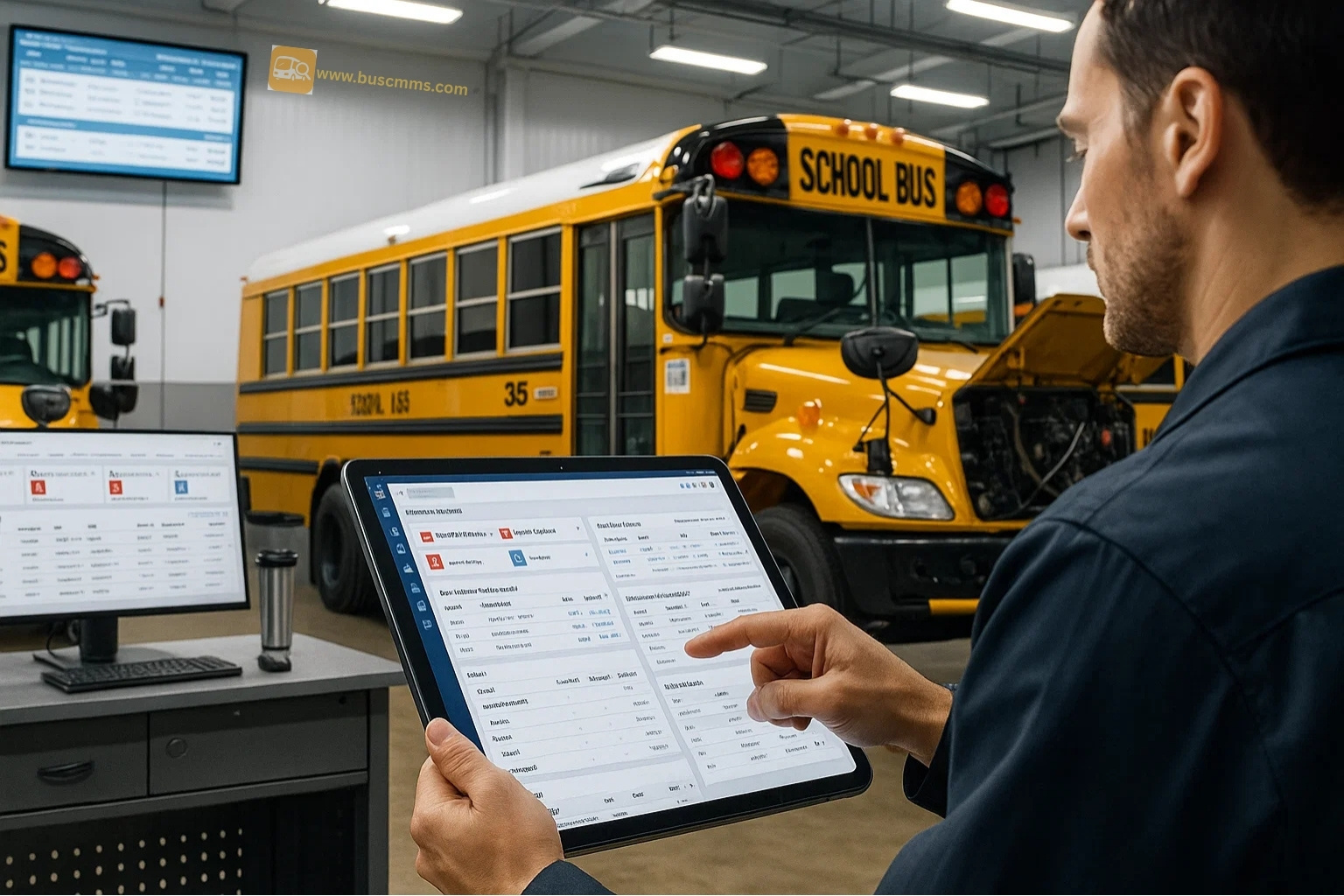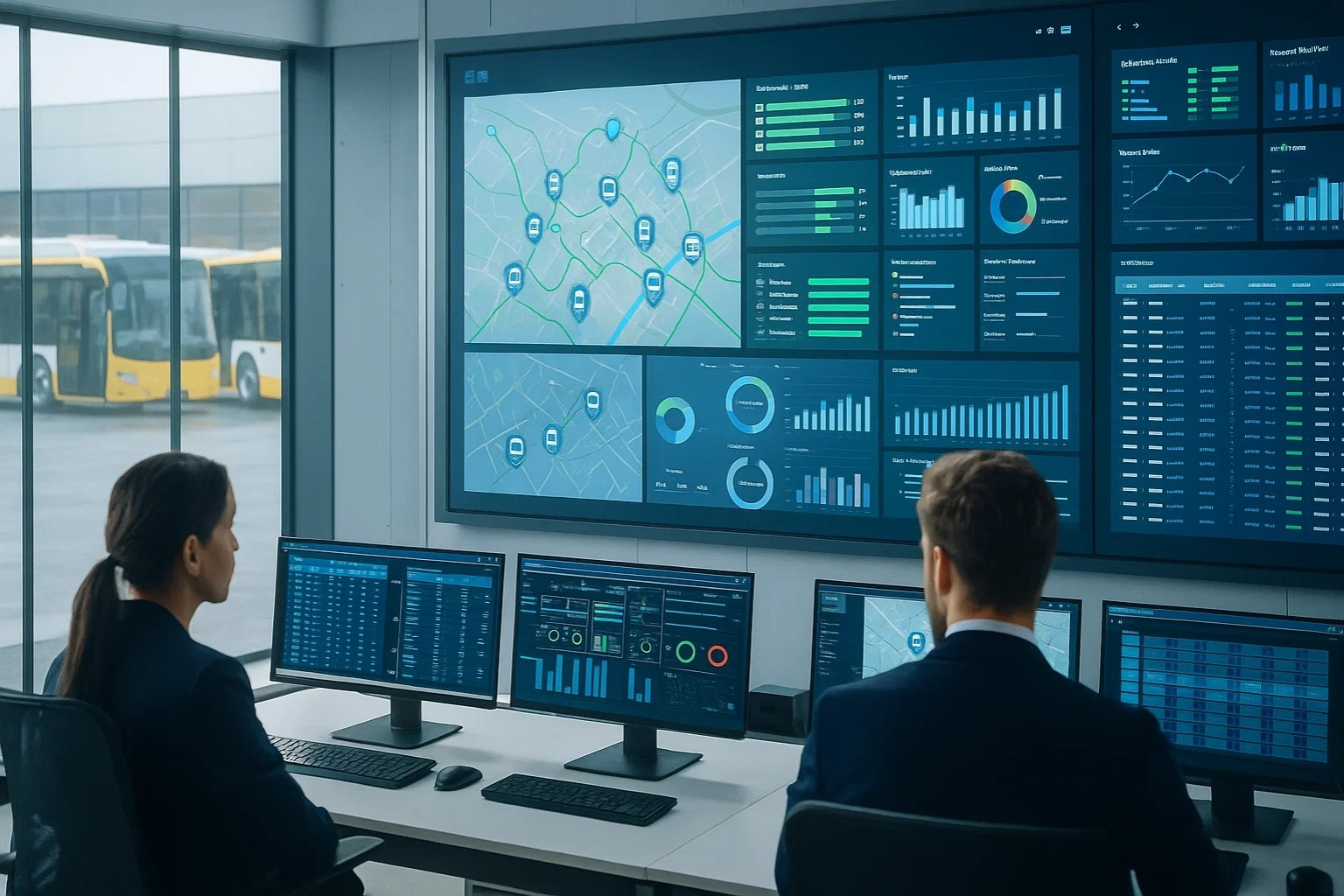In the world of US manufacturing and fleet operations, school buses represent one of the most critical transportation assets requiring systematic maintenance protocols. These vehicles carry our most precious cargo—children—making reliability and safety non-negotiable priorities. A well-structured maintenance plan doesn't just ensure compliance with federal and state regulations; it maximizes vehicle uptime, reduces unexpected breakdowns by up to 50%, and significantly extends fleet lifespan.
For manufacturing professionals managing school bus fleets, implementing a comprehensive maintenance strategy involves integrating predictive analytics, CMMS tools, and telematics integration to create a seamless operational framework. This approach transforms reactive maintenance into proactive fleet management, delivering substantial cost savings and operational efficiency gains that can exceed $2,400 per vehicle annually.
Build Your Strategic Maintenance Framework
Start implementing a data-driven maintenance plan that reduces costs by 30% while ensuring complete regulatory compliance.
Getting Started Book a Demo1. Establishing Your Maintenance Framework with Fleet Software
Creating an effective school bus maintenance plan begins with establishing a robust framework that leverages modern fleet software capabilities. Manufacturing professionals understand that systematic approaches yield consistent results, and bus fleet maintenance follows the same principle.
Start by implementing a centralized CMMS (Computerized Maintenance Management System) that serves as your single source of truth for all maintenance activities. This system should integrate seamlessly with your existing operational infrastructure while providing real-time visibility into fleet status, maintenance schedules, and compliance requirements.
Your framework should incorporate predictive analytics platforms to identify potential issues before they become costly breakdowns. By analyzing historical maintenance data, operating conditions, and vehicle performance metrics, you can shift from reactive repairs to proactive maintenance interventions. This approach typically reduces unplanned downtime by 35-50% while extending vehicle lifespan significantly.
Pro Tip: Integration with telematics systems provides continuous monitoring of engine diagnostics, fuel efficiency, and driver behavior patterns, enabling data-driven maintenance decisions that optimize fleet efficiency by up to 25%.
2. Implementing Preventive Maintenance Scheduling
Effective maintenance scheduling forms the backbone of any successful school bus operation. Manufacturing professionals recognize that scheduled maintenance prevents expensive failures and ensures consistent performance standards across the entire fleet.
Develop comprehensive maintenance schedules based on multiple triggers: mileage intervals, operating hours, calendar time, and diagnostic system alerts. Modern maintenance scheduling software allows you to create automated workflows that generate work orders, assign technicians, and track completion status in real-time.
Your scheduling system should account for seasonal variations in school operations. Summer maintenance windows provide opportunities for major overhauls, while school-year schedules must minimize service disruptions. Consider implementing staggered maintenance rotations that ensure continuous fleet availability while maintaining optimal vehicle conditions.
Daily Operations
- Pre-trip and post-trip inspections
- Fluid level checks
- Tire pressure monitoring
Weekly Maintenance
- Safety system checks
- Brake adjustments
- Battery testing
Monthly Reviews
- Comprehensive inspections
- Oil and filter changes
- Belt and hose evaluations
Annual Requirements
- DOT certifications
- Emission testing
- Complete system overhauls
3. Leveraging Diagnostic Systems and Predictive Analytics
Modern school buses incorporate sophisticated diagnostic monitoring systems that provide unprecedented visibility into vehicle health and performance. Manufacturing professionals can leverage these capabilities to implement predictive maintenance strategies that dramatically improve fleet reliability and reduce operational costs.
Diagnostic systems continuously monitor critical vehicle parameters including engine performance, transmission operation, brake system functionality, and electrical system integrity. When integrated with fleet automation platforms, these systems generate intelligent alerts that prioritize maintenance needs based on safety criticality and operational impact.
Predictive analytics transforms raw diagnostic data into actionable insights. By analyzing patterns in component wear, operating conditions, and failure modes, you can predict when specific maintenance interventions will be required. This approach enables just-in-time parts ordering, optimal technician scheduling, and minimal service disruptions.
Implement Predictive Maintenance Excellence
Transform your maintenance operations with diagnostic integration that predicts failures 30 days in advance with 94% accuracy.
Getting Started Book a Demo4. Ensuring Compliance Tracking and Documentation
Compliance tracking represents a critical component of school bus maintenance operations, with regulatory requirements spanning federal DOT standards, state transportation regulations, and local safety ordinances. Manufacturing professionals must implement systematic documentation processes that ensure full regulatory compliance while minimizing administrative overhead.
Modern CMMS tools automate compliance tracking by maintaining comprehensive records of all maintenance activities, inspections, and certifications. These systems generate automated alerts for upcoming compliance deadlines, ensuring no critical requirements are overlooked. Digital documentation eliminates paper-based processes while providing instant access to inspection records during regulatory audits.
Critical Compliance Components:
- Annual DOT Safety Inspections: Automated scheduling and documentation with 60-day advance notifications
- Driver Daily Inspection Reports: Digital capture with photo documentation and instant defect alerts
- Preventive Maintenance Records: Complete audit trails with technician signatures and parts tracking
- Emission Testing Compliance: Automated scheduling based on state requirements and vehicle age
- Safety Equipment Certifications: Fire extinguisher, first aid, and emergency exit inspections
5. Optimizing Route Performance and Fleet Insights
Route optimization directly impacts maintenance requirements by influencing vehicle wear patterns, fuel consumption, and component stress levels. Manufacturing professionals can leverage telematics integration and fleet insights to optimize both operational efficiency and maintenance outcomes.
Advanced fleet analytics platforms provide comprehensive insights that correlate route characteristics with maintenance needs. Hills, stop frequency, traffic patterns, and road conditions all influence maintenance requirements. By analyzing these relationships, you can adjust maintenance schedules to account for varying operational stresses across your fleet.
Fuel Efficiency Monitoring
Track consumption patterns by route and vehicle to identify maintenance needs and optimize performance
Brake System Analysis
Monitor usage patterns and wear rates to predict replacement needs and prevent safety issues
Engine Stress Indicators
Analyze load patterns and operating conditions to optimize maintenance intervals
Tire Wear Tracking
Predict replacement cycles and identify alignment issues before they impact safety
6. Building a Data-Driven Maintenance Culture
Success in school bus maintenance extends beyond technology implementation—it requires building a culture that embraces data-driven decision making and continuous improvement. Manufacturing professionals understand that the best systems fail without proper adoption and consistent execution.
Implement comprehensive training programs that ensure all stakeholders understand their roles in the maintenance ecosystem. From drivers conducting pre-trip inspections to technicians performing complex diagnostics, every team member contributes to overall fleet reliability. Modern training management systems track certifications, schedule refresher courses, and ensure compliance with regulatory requirements.
Establish key performance indicators (KPIs) that align with organizational goals and provide visibility into maintenance effectiveness. Regular performance reviews using real-time dashboard analytics enable continuous optimization of maintenance strategies and resource allocation.
Industry Insight: Fleets using integrated route optimization and maintenance planning typically achieve 20-30% reduction in maintenance costs while improving vehicle uptime by 15-25%. The combination of technology and culture change drives sustainable improvements.
Transform Your Fleet Maintenance Operations
Join leading school districts achieving 30% cost reduction and 25% uptime improvement through strategic maintenance planning.
Getting Started Book a DemoConclusion: Building a Sustainable Maintenance Excellence
Creating and following an effective school bus maintenance plan requires more than just implementing software and scheduling tasks—it demands building a culture of proactive maintenance that permeates your entire organization. Manufacturing professionals understand that sustainable success comes from combining the right technology platforms with well-trained personnel and clearly defined processes.
The integration of modern maintenance software, CMMS tools, and predictive analytics creates a powerful foundation for fleet efficiency and vehicle uptime optimization. However, the true value emerges when these technological capabilities are combined with consistent execution, continuous improvement, and a commitment to safety excellence.
As school bus fleets become increasingly sophisticated, the maintenance strategies that support them must evolve accordingly. By embracing fleet automation, diagnostic systems, and data-driven decision making, manufacturing professionals can transform their maintenance operations from cost centers into strategic advantages that deliver measurable value to their organizations and the communities they serve.
Frequently Asked Questions
Q: What are the key components of an effective school bus maintenance plan?
A: An effective school bus maintenance plan includes preventive maintenance scheduling, compliance tracking, diagnostic system integration, predictive analytics, and comprehensive documentation. The plan should leverage CMMS tools and fleet software to automate workflows, ensure regulatory compliance, and optimize vehicle uptime through data-driven maintenance decisions.
Q: How often should school buses undergo preventive maintenance?
A: School buses require daily pre-trip inspections, weekly safety checks, monthly comprehensive inspections, and quarterly major system evaluations. Specific maintenance intervals depend on mileage (typically every 3,000-5,000 miles), operating hours, and manufacturer recommendations. Modern maintenance scheduling software can optimize these intervals based on actual usage patterns and diagnostic data.
Q: What role does predictive analytics play in school bus maintenance?
A: Predictive analytics analyzes historical maintenance data, diagnostic information, and operating conditions to predict when maintenance interventions will be needed. This approach reduces unplanned downtime by 35-50%, enables just-in-time parts ordering, and extends vehicle lifespan by addressing issues before they become major failures. Advanced systems can predict component failures with 94% accuracy up to 30 days in advance.
Q: How do CMMS tools improve school bus fleet efficiency?
A: CMMS tools centralize maintenance data, automate work order generation, track compliance requirements, and provide real-time visibility into fleet status. They integrate with telematics and diagnostic systems to enable predictive maintenance, reduce administrative overhead by 60%, and ensure consistent maintenance execution across the entire fleet, resulting in 20-30% cost reduction.
Q: What compliance requirements must school bus maintenance plans address?
A: School bus maintenance plans must address federal DOT safety standards, state transportation regulations, annual inspections, daily driver inspection reports (DVIR), emission testing requirements, and safety equipment certifications. Modern maintenance software automates compliance tracking and generates alerts for upcoming deadlines to ensure no requirements are missed, maintaining 100% compliance rates.


